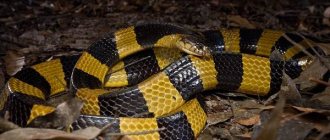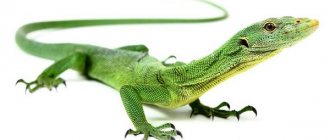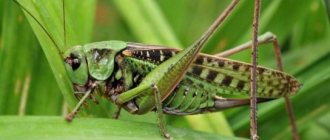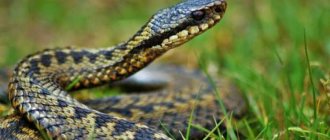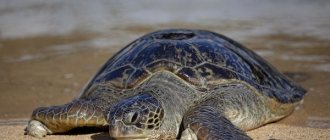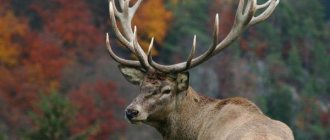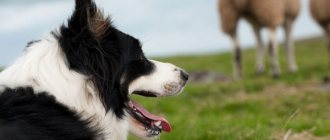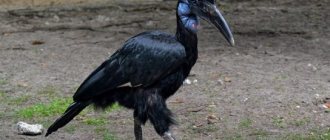Many people are scared of snakes. At the same time, it is simply impossible not to note their features and uniqueness. Cold-blooded animals amaze with their behavior, original method of movement, the strength of the toxic substance and their unusual appearance. Snakes belong to the chordates of the animal world. Reptiles are included in the order Scaly, suborder snakes. The existence and well-being of cold-blooded animals is greatly influenced by the ambient temperature. The study of snakes reveals the unpredictable traits of reptiles and is gaining a growing audience that cannot help but fall in love with this population.
Characteristics and structure of snakes
Until recently, science knew of 3,200 species of snakes, and only 410 species were poisonous. The most interesting and unusual feature of cold-blooded animals is their unique body structure. An adult can grow up to nine meters in length. The smallest snakes grow up to 10 cm. The same fluctuations apply to the weight of representatives of the squamate order, starting from 10 g and reaching 100 kg. The main distinguishing feature of males is their long tail; they also grow smaller in size.
The variety of body shapes is simply amazing. There are individuals that have a long and thin body, or, conversely, a short and thick body. Those snakes that live near the sea have a flattened appearance and often resemble a ribbon. The skin of cold-blooded animals is predominantly dry, completely covered with scales or peculiar scutes. In different parts of the body, the surface is different, for example, on the sides and on the back the scales are small and resemble tiles (as they overlap each other). The belly of most snakes is “studded” with wide semi-circular plates.
The snakes' eyelids are motionless and seem to be able to hypnotize their prey. Reptiles never blink and even sleep with their eyes open. The unique structure of the skull allows even the smallest individuals to open their mouths enough for a small rabbit to fit into it. This is because the upper jaw is connected to neighboring bones and is movable, while the elements of the lower jaw are connected by a ligament that stretches.
Due to the unusual body, the structure of the organs is also unique: they are all elongated and elongated closer to the head. The skeleton has a total of about 200-400 vertebrae, each of which is movable and connected by ligaments. The snake glides along the ground due to the movement of the scutes located on the belly. Thanks to the keratinized layers of the epidermis, cold-blooded animals move quickly without difficulty.
Despite all the features of snakes, reptiles have poor eyesight and hearing. In return, nature rewarded them with an excellent sense of smell and touch. An important role in orientation in space is played by the tongue, which is forked at the end. Many researchers call it a “sting.” Opening its mouth, the snake catches the air with its tongue and various particles and elements of the atmosphere stick to it, then the reptile brings the organ to a certain place located in the mouth and smells and tastes.
In most cases, snakes use their venom for self-defense, and this is also one of the ways to kill the victim.
Natural enemies of cobras
Although cobras are deadly snakes, they also have natural enemies. Their most vulnerable position is formed at the moment of hatching, when young individuals are not yet maximally protected. Their poison will not cause fatal damage to large enemies, and therefore they have practically no means by which to build their self-defense.
Adults also have enemies in the wild. These include, for example, meerkats and mongooses. They are distinguished by their agility and resourcefulness, which help them cope even with large, dangerous snakes. For example, meerkats first distract the snake and then bite it in the back of the head. Such an attack often becomes fatal for the cobra, since it practically cannot stop it in any way.
Often adult cobras die under the wheels of cars. They randomly end up on the track. So, when meeting a car, snakes try not to run away from it, but to scare it away, as is the case with other enemies. As a result, the cobras fall under the wheels of the car.
To protect themselves from natural enemies, snakes use various means. Some take a threatening stance and inflate their “hood,” others emit a dangerous hiss, and some pretend to be dead.
Nutrition and hibernation of snakes
What snakes eat depends directly on the size of the cold-blooded animal. The main diet of reptiles consists of frogs, rodents, lizards, and some types of insects. But the fact remains that all snakes are carnivorous. For individuals, it is considered a real delicacy to have breakfast with small chicks or eggs. Thanks to the ability to climb trees, they easily destroy bird nests and enjoy their meals.
Meals are not eaten every day. Snakes cope well with hunger and, provided there is water nearby, individuals can go without eating for months. The peculiarity of reptiles is their endurance and patience. Snakes hide among the foliage, wait for prey along the road or on the ground, but the hunt is patient and, as a rule, effective. Animal-eaters swallow food from the head, but with caution, so as not to be injured by the sharp teeth of the victim. Before this process, individuals try to immobilize the animal by squeezing its body with their rings.
Food is digested within 2-9 days. The speed of the process depends on the health of the individual, the ambient temperature, and the size of the prey. To speed up digestion, many snakes expose their abdomen to the sun.
Snakes do not like cold weather, so at the end of October - beginning of November they leave for the winter. Individuals can choose a rodent burrow, a haystack, tree roots, cracks, crevices and other places as a home. If reptiles are near people, they hide in basements, sewer systems, and abandoned wells. Animal hibernation may be interrupted or not occur at all (if cold-blooded animals live in a tropical or subtropical climate).
Towards the beginning of April, representatives of the scaly order begin to crawl out of their shelter. The exact time to “come out of torpor” depends on humidity levels, temperature and other factors. Snakes bask in the sun almost all spring. During the daytime in summer, animals prefer to be in the shade.
How cats see
Cats cannot focus on small details, so they see the world a little blurry. It is much easier for them to perceive an object in motion. But the opinion that cats are able to see in absolute darkness has not been confirmed by scientific research, although in the dark they see much better than during the day. The presence of a third eyelid in cats helps them get through bushes and grass while hunting; it wets the surface and protects it from dust and damage. You can see it closely when the cat is half dozing and the film peeks out through half-closed eyes. Another feature of cat vision is the ability to distinguish colors. For example, the main colors are blue, green, gray, but white and yellow can be confused.
Numerous families of snakes
Experts have differing opinions regarding the number of families in the suborder of snakes. Here is the most popular classification of reptiles:
- Colubridae - this family has more than 1,500 species. Among them are a wide variety of snakes, differing in color, shape, pattern and habitat. Representatives of this group grow from 10 centimeters to 3.5 meters. These include aquatic and terrestrial, burrowing and arboreal cold-blooded animals. More than half of the snakes are non-venomous and are often kept in terrariums. At the same time, false snakes are considered poisonous representatives of this group, as they have large teeth with grooves along which a dangerous substance flows.
- Vipers - the family includes more than 280 species. Most often, viper snakes are found on continents such as Asia, North America, Europe and Africa. The body length of cold-blooded animals varies from 25 cm to 3.5 m. Representatives of this family have light zigzag or rhombic patterns on their sides and back. All individuals have long fangs that secrete poison.
- Aspids - there are about 330 species of snakes. This group of reptiles is poisonous. Individuals grow from 40 cm to 5 m in length. Cold-blooded animals can be found on continents such as Asia, Africa, America and Australia.
- Blind snakes - the family includes about 200 species. Snakes of this group live almost throughout the planet.
Thanks to their ability to adapt, snakes can be found in any part of the world. Despite belonging to the same family, animals have a variety of shapes, colors, differ in color, habitat and other characteristics.
Already ordinary
Externally it is a black or gray snake with a yellow head. The body is on average 70 centimeters long, but in rare cases it can reach 1.5 meters.
The back is painted grayish-black. There are two bright yellow spots on the head. It lives in temperate latitudes of Europe and Asia.
The yellow-headed snake feeds on fish and amphibians. Non-toxic, therefore safe for humans. In rare cases, it may bite. When in danger, he prefers not to attack, but to hide.
The most striking representatives of snakes
Among the wide variety of snakes, the most striking subspecies are considered to be snakes, vipers, adders, sea snakes, pitheads and cold-blooded pseudopods. The following reptiles are considered the most interesting and unusual.
Hamadryand (king cobra)
If you collect all the snakes together, the hamadryand will be superior to the rest. This type of animal-eating animal is considered the largest, even gigantic and poisonous. The king cobra grows up to 5.5 meters; today there is no antidote for its bite. The terrible poison kills the victim within 15 minutes. In addition, it is hamadryands that can eat their own kind. Females can fast for three months, carefully guarding their eggs. On average, cobras live about 30 years and most often they can be found in the territory of the state of India and the islands of Indonesia.
Desert taipan (fierce snake)
It is quite possible to meet a land killer in the desert or on the plains of Australia. Quite often, individuals of this species grow up to 2.5 meters. The venom of a cruel snake is 180 times more powerful than that of a cobra. The color of a cold-blooded animal depends on weather conditions. So, in hot weather, taipans have straw-like skin, and in cold weather, they have dark brown skin.
Black Mamba
The maximum height of a black mamba is 3 meters. The representative of reptiles is considered the fastest (individuals can move at a speed of 11 km/h). A poisonous snake kills its victim in just a few seconds. However, the animal is not aggressive and can attack a person only if it feels threatened. The black mamba got its name because of the color of its mouth stripe. The skin of a predator comes in olive, green, brown shades, sometimes with an admixture of metal.
Cassava (Gabon viper)
Large, thick, poisonous - this is how one can characterize the Gaboon viper. Individuals grow up to 2 meters in length, and have a body girth of almost 0.5 meters. The main feature of the animals is the unique structure of the head - it has a triangular shape and small horns. This type of snake can be classified as calm. Females are viviparous.
Anaconda
Anacondas are included in the boa constrictor family. These are the largest snakes, which can be 11 meters long and weigh 100 kg. The “water boa” lives in rivers, lakes, and creeks and is a non-poisonous reptile. The main food of cold-blooded animals is fish, waterfowl, iguanas and caimans.
Python
A giant non-venomous snake reaching 7.5 meters in length. Females differ from males in their powerful body and large size. Pythons prefer to feed on small and medium-sized mammals. They can easily swallow a leopard, porcupine, jackal and digest the prey for many days. Snakes of this type hatch eggs, maintaining the desired temperature.
Eggeaters (African egg snakes)
The animals feed exclusively on eggs and grow no more than 1 meter in length. Due to the unique structure of the skull, small snakes easily swallow large prey. The cervical vertebrae break the shell, and the contents of the eggs are swallowed, while the shell is coughed up.
Radiant snake
Non-venomous snakes with excellent body color. Individuals grow up to 1 meter and feed on lizards and small rodents.
Worm-like blind snake
Small representatives of reptiles (length does not exceed 38 cm) look like earthworms. They can be found under stones, in bushes, and rocky slopes.
Reptile menu
What does a snake eat? The snake's diet includes a variety of small mice, miniature birds, eggs of large frogs, small lizards and small chicks.
If the reptile is kept at home, then to maintain good condition it is recommended to feed it twice a week. To do this, you can purchase small rodents in pet stores, which will certainly appeal to the taste of this individual.
In order for the snake to feel as comfortable as possible in the cages, it is necessary to install large containers with liquid. Some professionals prefer to purchase air humidifiers, the functionality of which allows them to create an optimal microclimate for the Texas snake.
Non-venomous snakes
Non-venomous snakes include the following representatives of cold-blooded animals:
Common snake
Common snake - distinctive features are yellow or orange spots located on the sides of the head;
Amur snake
Amur snake - the length of the animal can reach 2.4 m, belongs to the colubrid family;
Common copperhead
Other non-venomous snakes include the tiger and reticulated python, milk snake, corn snake, yellow-bellied snake and aesculapian snake.
Tiger python
Reticulated python
Milk snake
Yellow-bellied Snake
General provisions
White snakes are not an independent species. These are genetically unique reptiles. In other words, the answer to the question “what is another name for a white snake” is an albino.
The most famous are Californian albinos. According to experts, in a few more years they will occupy most of the inhabited territory of the Canaries.
You can rarely come across a white snake in nature, and it can belong to any family of these reptiles.
However, it is worth remembering that milk snakes are a separate species that has nothing in common with albinos.
Poisonous snakes
Gyurza
The viper is one of the most dangerous poisonous snakes. The length of individuals rarely exceeds two meters.
Efa
Asia is home to such a dangerous predator as the efa. Snakes of this type are afraid of people and warn them of their presence by hissing. Cold-blooded snakes grow up to 80 cm and are viviparous snakes.
A special place in the list of poisonous snakes is given to rattlesnake (pit-headed) representatives of reptiles. They are one of the most dangerous animals on the planet and are known for their tail, which acts as a “rattle.”
Rattlesnake
How do birds see?
Birds have four types of cones, or so-called light-sensitive receptors, while humans have only three. And the field of view reaches up to 360%, if compared with a person, then it is equal to 168%. This allows birds to visualize the world from a completely different perspective and much richer than the perception of human vision. Most birds can also see in the ultraviolet spectrum. The need for such vision arises when they get their food. Berries and other fruits have a waxy coating that reflects ultraviolet color, making them stand out against green foliage. Some insects also reflect ultraviolet light, giving birds a distinct advantage.
On the left is how a bird sees our world, on the right is a person.
Snake Reproduction
Cold-blooded animals like to be alone. But during the mating season they become very friendly and loving. The “dance” of males can last many hours before the female gives consent to fertilization. Most snakes are oviparous animals, but there are some species that give birth to live young. A snake clutch can reach 120,000 eggs (this process is influenced by the habitat and type of reptile).
Sexual maturity in snakes occurs in the second year of life. The female is searched for by smell, after which the males wrap themselves around the body of the chosen one. Surprisingly, parents of newborns do not pay the slightest attention to them.
